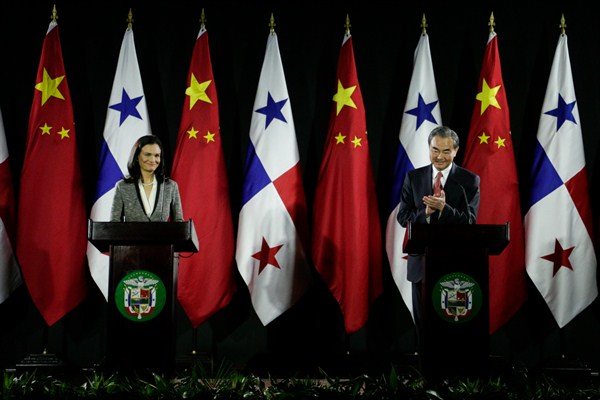When Panama cut diplomatic ties with Taiwan in favor of recognizing China in June, it was an acknowledgment of the significant commercial interests China already has in one of the most important transport and financial hubs in the Western Hemisphere. It also opened the door for deeper Chinese involvement in Panama. In an email interview, R. Evan Ellis, a research professor of Latin American studies at the U.S. Army War College Strategic Studies Institute and the author of “The Strategic Dimension of Chinese Engagement with Latin America,” explains what’s behind Panama’s diplomatic shift, the opportunities the move unlocks and what it means for China’s wider strategy in the region. The views expressed in this interview are strictly those of the author.
WPR: What prompted the sudden engagement between Beijing and Panama, and why were there no official relations prior to 2017?
R. Evan Ellis: The change reflected China’s abandonment of its informal “diplomatic truce” with Taiwan in 2016, as well as its significant, economically driven soft power in Central America. In 2008, China and Taiwan had agreed to suspend their struggle to change the diplomatic posture of states recognizing the other, while working to strengthen their own political and diplomatic relationship. But a breakdown in the truce following the January 2016 election of the Democratic Progressive Party in Taiwan led Beijing to punish Taipei through its diplomatic relations. Panama’s shift from recognizing Taiwan to China was the third such victory for Beijing in its resumed diplomatic struggle, which began with the recognition of Gambia in March 2016, followed by Sao Tome and Principe in December.

